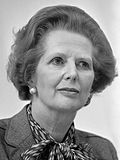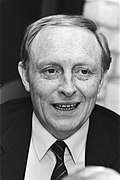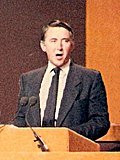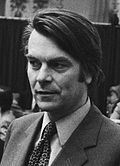Local elections were held in the United Kingdom in 1984.[1][2] There was a slight reversal in the Conservative government's fortunes, but the party remained ahead. The projected share of the vote was Conservatives 38%, Labour 37%, Liberal-SDP Alliance 21%.
| |||||||||||||||||||||||||||||||||
All 36 metropolitan boroughs, 123 out of 296 English districts and all 53 Scottish districts | |||||||||||||||||||||||||||||||||
|---|---|---|---|---|---|---|---|---|---|---|---|---|---|---|---|---|---|---|---|---|---|---|---|---|---|---|---|---|---|---|---|---|---|
| |||||||||||||||||||||||||||||||||
Labour gained 88 seats, bringing their number of councillors to 8,870 in the first elections under the leadership of Neil Kinnock who had succeeded Michael Foot the previous autumn.
The Conservatives lost 164 seats, leaving them with 10,393 councillors.
The SDP-Liberal Alliance, now led by David Owen, gained 160 seats and finished with 2,331 councillors.
Three parliamentary by-elections were also held on the same day in the Cynon Valley, Stafford and South West Surrey constituencies. Labour held Cynon Valley, and the Conservatives held Stafford and South West Surrey.
Summary of results
editThis section is empty. You can help by adding to it. (September 2015) |
England
editMetropolitan boroughs
editAll 36 metropolitan borough councils had one third of their seats up for election.
District councils
editIn 123 districts one third of the council was up for election.
A further 20 councils had passed a resolution under section 7 (4) (b) of the Local Government Act 1972, requesting a system of elections by thirds. They could do so because they had had their new ward boundaries introduced at the 1983 elections.
Scotland
editDistrict councils
editReferences
edit- ^ Rallings, Colin; Thrasher, Michael. Local Elections Handbook 1984. The Elections Centre. Retrieved 3 May 2016.
- ^ "Council compositions". The Elections Centre. Retrieved 3 May 2016.



